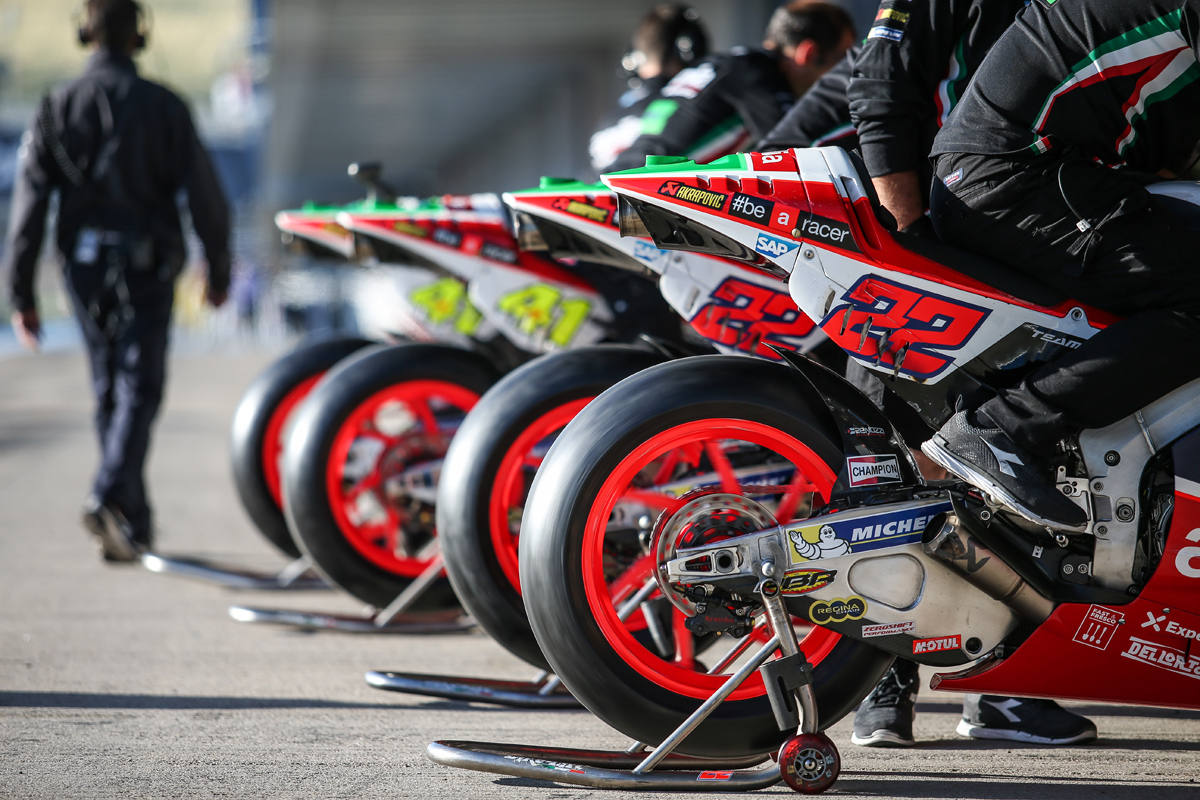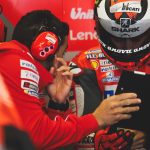If there is one thing that determined the outcome of the MotoGP race at Jerez it is surely grip. The stickiness of the Andalusian asphalt, and the way it changed in the heat of the afternoon, proved to be a determining factor in the race. Nobody had grip there, the track has not been resurfaced for 14 years, and the afternoon temperatures transformed it to an ice rink. How the different bikes and riders dealt with that made the difference between victory and defeat. And boy, were there a few defeats on Sunday.
The first sign that there was something strange going on at Jerez was when FIM Safety Officer and former 500cc world champion Franco Uncini stuck the BMW safety car into the wall on the exit of Turn 5, the fast right hander leading on to the back straight. Now, the news that a current or former motorcycle racer has managed to crash a fast car is about as surprising as learning that the Bishop of Rome has a keen interest in the Catholic creed, yet Uncini’s record in the safety car is fairly impeccable. For the Italian to lose control of the car and hit a barrier is unheard of. Especially when the car also contains a guest, along for the ride. Observers remarked that it had been a rather strange crash. Yes, Uncini had been traveling at speed, as he always does when circulating in the safety car. But the movement the car had made had been a surprise. It was the first inkling that there might be something amiss with the grip at the track.
The race played out as an object lesson in using available grip. The Hondas had it, and won, Dani Pedrosa reigning imperious at a track he loves. The Yamahas needed it, but had none, and finished well down the order. Except for Johann Zarco, who had found front grip with the medium front, and rode an exceptional race to fourth place. The Ducatis were somewhere in the middle, and Jorge Lorenzo put the Desmosedici on the podium at one of his favourite circuits, while Andrea Dovizioso had his best race on a Ducati at Jerez.

What caused the variation? Grip in motorcycle racing is a peculiar and complex thing, yet it is the defining factor in the sport. The friction created between the two tyres and the track determines exactly where a rider finishes. Friction is referred to as traction when applied to the rear wheel, where power from the engine is converted to speed on the ground, and to grip when applied to the front wheel, where steering forces try to divert the direction the motorcycle is traveling in, to get it round the corner, and on to the next one. Grip is the be-all and end-all in racing, the holy grail each team and rider are chasing.
There are two elements to grip: the compound of the tyre rubber, and the friction coefficient or abrasiveness of a track surface. Or rather, there is just one element: the complex interaction between those two factors. Every other part of a motorcycle is designed around those elements: chassis design is aimed at maximizing the interaction; tyre profile and carcass construction at optimizing it under varying loads, such as braking, cornering, or acceleration; suspension and bike setup is used to find the best compromise under all circumstances on the bike; rider input (braking, acceleration, the endless shifting of bodyweight in search of traction) aimed at finding and understanding the limits of grip.
There are complicating factors too, especially at a track like Jerez, which probably has the lowest grip of all the circuits on the calendar. Jerez changes radically in the heat, giving lots of grip when track temperatures are under 30°C, grip dropping off drastically when they rise above 41°C. Then there’s the fact that each class leaves a layer of rubber on the track, affecting the category which comes after them. The featherweight Moto3 bikes and their skinny tires barely mark the surface, while Moto2 and MotoGP have more horsepower, more weight, and fatter tires to smear their rubber all over the circuit.
Almost every Sunday, MotoGP riders complain how the track changes when racing after Moto2. They practice after Moto3, which barely affects them, then in the race, the track feels totally different. Rookie Jonas Folger noticed this for the first time at the Jerez race. ‘I felt it really the first time after Jerez. I remember when I was in Moto2, and we always had practice after MotoGP, always the first five or six laps, you could make the fastest lap time, because you still had the rubber from the MotoGP. After you put the the Moto2 rubber back, then the grip was getting less again.’
This, then, perhaps explains some upsets and surprises at Jerez. The Hondas found grip, and won. Maverick Viñales struggled with his front tyre and finished sixth. Valentino Rossi gambled and lost on a setting to find rear grip, ending in tenth. At other tracks, where grip is less extreme, the results will be different, or even reversed. But in the end, grip will always determine the outcome.
If you like this Blog post then catch plenty more in the new issue of OTOR by clicking HERE
Photos by CormacGP








